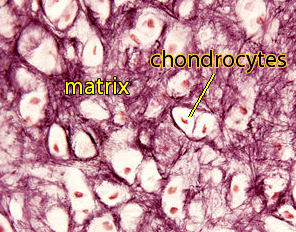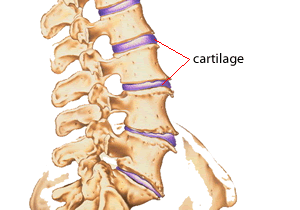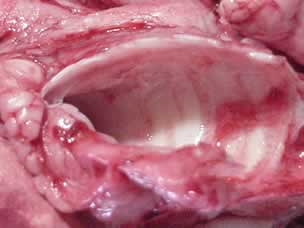Cartilage
Cartilage is a type of flexible connective tissue consisting of cells called chondrocytes and a tough, flexible matrix made of collagen, elastin, and sugar. It is the chondrocytes that produce the flexible extracellular matrix. As an animal matures most of the cartilage is converted to bone. However some cartilage remains in the nose and ears, as well as joints such as the knee, hip, shoulder, spine and fingers.


Cartilage, unlike other connective tissues, does not contain blood vessels. Because of this, cartilage grows very slowly and any damage to the cartilage takes a long time to heal. The cells, chondrocytes, are supplied by diffusion, helped by the pumping action generated by compression of the flexible cartilage. The fact that chondrocytes can not migrate through the matrix to damaged areas limits further the capacity for cartilage to heal.

View the video on the right.
Cartilage contains
The matrix between the cells of the cartilage contains
What are the three different types of cartilage?
Describe the difference of each cartilage?
Where would you find each type of cartilage?
What type of cartilage forms the rings of the trachea, as pictured on the right?
Why is cartilage difficult to heal after injury?
How do the cells (chondrocytes) of the cartilage receive nutrients and remove waste?
What is arthritis?
What is the difference between rheumatoid arthritis and osteoarthritis?
